Celia Lake's Blog, page 3
February 11, 2025
Making the Pact
More about the background of the Pact in the previous post. Here we’re looking at who makes the Pact, when, and some edge cases.
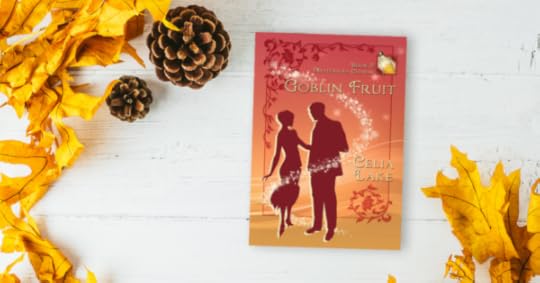 Who makes the Pact
Who makes the PactIn the apprenticeship post, I mentioned that about 50% of the population has a low level of magic. To clarify, this means people who are of Albion (magical) – not the total population of Britain.
You can think about the demographics here as being like any other fairly widely held talent. Most people can sing a little bit. But for most people, that’s going to be singing for their own pleasure, humming along when music’s playing or in the shower.
A lot of people can generally carry a tune in a bucket, but they’re not going to be doing that for a significant audience in public. That’s our 50% with minimal magic (and also usually minimal training in it).
These are people who – in Albion – make the Pact, have access to services in the magical community, and can use magical devices. Those things are small, but they can make up for substantial low-key benefits over time.
Someone who can use a magical stove needs to spend less time going out and getting fuel for it. Their milk stays sweet longer in a keep-cold box, with less fuss about chunks of ice melting. If they make salves and such at home, those work better than the materials alone to prevent infection or problems. And these people can also benefit (depending on where they live and what’s going on) from services in Albion’s communities: portals, Healers, magical specialists, and more.
There are people who have much stronger magic, and that’s as I described in that post.
About 35% are at the level of ‘can sing happily in a community space, maybe with the occasional solo’, taking the lead in pub sings or equivalent events, and so on. Music is a more substantial part of their life and their community.
Finally, some people are strongly talented and well trained – these would be people who are making music a major part of their life (often their profession). At this stage, there are also more complex standards around expertise and the precise nature of their skills. That’s our last 10% or so.
(Obviously, these numbers don’t map directly to music in our world, but I hope that gives a better overall sense!)
When people make the PactPeople who grow up in Albion make the Pact when they turn twelve. That’s usually within a week or so of their birthday, depending on scheduling. Some families have more elaborate rituals for this, for others it’s the sort of routine administrative act like registering to attend a school. It takes perhaps ten or fifteen minutes total when you add up the greetings and congratulations.
It is witnessed by representatives from the Ministry or by other duly appointed individuals. The Lords and Ladies of the land, the magistrates, members of the Guard, etc. are all possible options here. Optimally, the witness is not from the family of the person making the Pact. But the truth magics mean that if that’s what happens, there are ways for the witness to confirm it under magical oath and for everyone to be secure about things having been done properly.
ImmigrationOf course, sometimes people come to Albion as adults – or at least over the age of twelve. People who are briefly visiting usually are in places or situations where it’s not a problem. Either they’re entirely in the magical community, or well aware how to handle things otherwise. Witchcraft is still illegal in the United Kingdom until 1954, so it’s not like people would be going around talking about magic in the ways that could cause problems in most cases.
If someone wants to stay in Albion, they make the Pact as part of their immigration or visa arrangements. It’s then binding when they’re interacting with Albion. (What they do elsewhere on their own time in other countries not bound by the Pact is up to them.) When Henut and Philip Landry arrive in Albion in 1870, they make the Pact shortly after their arrival since Philip is already 12. Alexander does not until he turns 12.
Making the PactThe actual ritual involved is very simple. There are a few standard sentences repeated by the person making the Pact. Making the Pact requires having a small amount of magical potential, but not very much. Think of it maybe like basic literacy. It doesn’t require any particular magical skill or expertise.
The magical work and heavy lifting is being done by the Pact itself. It’s basically a binary “Was the oath made in the expected way? Yes? Right, you are now bound by the Pact.” It’s very hard to mess up if you mean to make it. The witness is there to verify it was done.
While the witness is often magically competent, they aren’t doing any part of making the ritual work. If you think of it like taking an oath of citizenship after naturalisation, that might be a good model. It has a known structure, saying the words makes the thing official once it’s witnessed.
Edge casesDevelopmental or intellectual disabilityChildren are protected by the Pact with a sort of ‘fog of confusion’. If they talk about Albion’s magic around people who shouldn’t know about it, the Pact encourages the people overhearing to take it in a way that won’t be a bother. Maybe they take it as a child’s fancy, or they think they misheard. Or they’ll forget the bit that was a problem. Which of these it is depends on the circumstances.
This also protects people who do not have the intellectual capacity to make the Pact due to developmental or intellectual disability (or for that matter, later injury).
In practice, this one is not a huge problem. Some people in this situation are likely to be either living enough in the magical community they aren’t interacting with people outside of Albion. Or if they’re living mostly in the non-magical community, and the people of Albion in their family might be careful how they talk about certain topics anyway.
Magic too slightAs above, the amount of magic someone needs to make the Pact is very small indeed. Most of the time in these cases, if someone comes from a magical family, they’ll make the Pact. They can also choose not to make it. But they’d need to arrange their life so it didn’t cause trouble for their family (who would have trouble talking about magic around them or anyone else). Again, the sort of ‘fog of magic’ effect is in play here: someone who doesn’t make the Pact might just feel a longstanding inclination never to talk about that topic in non-magical spaces.
The powerful self-protective magic is both powerful and fairly flexible in the protection, in other words.
The post Making the Pact appeared first on Celia Lake.
The Pact
The Pact has been a foundational magic of Albion since 1484. After my post about apprenticeship, I had several great questions from people who wanted to know more about specific aspects. This post covers the basics of the Pact. The following post (up on the same day) gets into making the Pact in more detail.
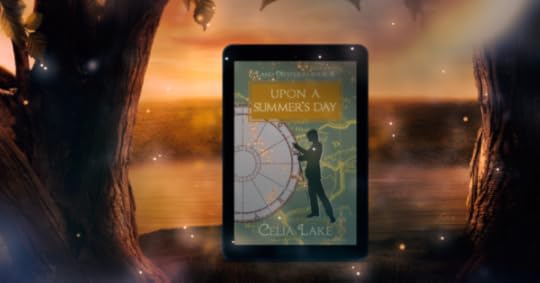 The Pact
The PactBasically, the Pact is a magical agreement that enforces itself. Set up in 1484 as part of a complex treaty between the Fatae and the humans of Albion, it is basically a massive geas that is anchored into the land and land magic and into the people of Albion. If someone makes the Pact (a brief magical ritual, more below), and then does something that goes against it, the magic involved will react to prevent that breech.
The Pact involved a number of complex treaty agreements. These range from protection of Fatae and Cousin held spaces to how things like mining near Fatae spaces is handled. It also included agreements for certain kinds of magical skill sharing. Portals came out of this, also some kinds of Healing techniques. Both sides have generally felt it’s a fair deal for them. The Council exists in large part to make sure that no one causes trouble about those agreements.
The Pact also involved an agreement not to speak or take actions that would reveal Albion’s magic around anyone who hasn’t also made the Pact.
The experience of the PactIf someone does something against the Silence, there are consequences. For innocents (children and people who don’t realise what they’re doing, more in the next post), the Pact provides a sort of fog effect. For people who should know better, the Pact will initially give a sense of pressure around someone’s most demanding fears. If someone continues doing what they’re doing that’s against the Pact, that will become stronger and stronger.
Why is it fear? Fear is the emotion that’s most likely to distract people from what they’re doing and make them shut up or at least say something entirely different. As various characters mention, the Pact is sometimes a blunt instrument.
The underlying magical structure also provides a foundation for binding magical oaths and for the truth magic. The former is limited by people’s ability to make a sensible oath. The latter has some other considerations. The truth magics are more complex to set up. They need either supporting architecture or a specific combination of skill and ties to the land.
Brushing against a breechThat same fear will also come to the surface if someone makes an oath on the Silence, anchoring the oath in the foundational magic of the community. At various points in the books, people notice that, or sometimes get a brief impression of someone else’s fear.
Some people routinely make oaths on the Silence. They’re common for members of the Guard, the Courts, or the Penelopes (or anyone else dealing with legal situations). Your average crafter or farmer, however, might make an oath on the Silence more on the order of every five to twenty years. Mostly, that happens if there’s a court case or something similar where they are involved or a witness.
(A side note: oaths on the Silence is also how Albion handles operational security and the magical journals in wartime. There are a set of standard oaths people took not to share relevant material via journal or letter without direct and specific authorisation, the same as uncensored letters would need.)
For many of my characters, their experiences in the Great War or Second World War are pretty core to whatever fear they feel.
For others, it’s something that has changed over time. Gabe’s is a massive snake and everything that means to him from the time he’s 18. What the snake means changes for him over his adulthood, and so does his experience of the Silence.
Outside of AlbionThe Pact is not in play outside of Albion in the same way. Because of colonisation, people in the British empire who interact regularly with the British magical community do almost always make the Pact. Certainly anyone who spends more than a week or two in Britain does.
In a lot of cases outside of Albion’s direct lands, it’s binding because people agree it’s binding. (In this case, the act of deliberately connecting to it has a bit more oomph.)
However, people in the empire who do not go through British schools or institutions often don’t make it. In The Fossil Door, Gabe and Rathna discuss what magic looks like in India in that case. In their case, the fact they’re bound by the Pact means they need to be cautious about what they say and to whom – they can’t just ask!
One notable thing is that the Pact is unique to Albion – other countries in Europe, and other places around the world (barring that colonial British empire problem) did different things. This plays out in various ways over spaces and time. In practice people who are magical in those countries tended to form their own communities and have their own methods for determining who was safe to talk to about magic.
American custom is basically to follow the Pact, but it’s much less binding in magical terms. (Just, basically still a solid idea not to talk about magic where others can hear.) There are some individual lines of training and practice where people make an equivalent oath. In that case, it’s anchored by the individuals and ritualists.
The next post will deal with the actual process of making the Pact.
The post The Pact appeared first on Celia Lake.
February 4, 2025
Healers and apprenticeship
Continuing on from last week’s post about apprenticeships in general, it’s time to dive into a specific set of training: Healers and related professions.

The Healers are one of the more structured and institutional apprenticeships for a variety of reasons. Like the Guard (which also has a similar process), there’s a particular need to be confident everyone has a similar level of training and background. Rather than leaving that up to individual apprentice masters and mistresses, there are structures that coordinate training.
Also, much like our own medical training, for many people it’s not always obvious which specialty they’d like to focus on until they’ve had more exposure to the various options.
Healer trainingChoosing to apprentice as a Healer has several different routes. Most commonly, people express some interest during their other schooling or education. Many Healers and related professions attend Schola or Alethorpe. But some come into via village schools, simpler apprenticeships in a related field, or coming to the attention of a village Healer who thinks they’d do well.
The beginning of the apprenticeship is the same for all Healers (or potential Healers). It begins with a year or so of covering many different areas of the field. From there, people move into two week rotations with a number of different areas of the Temple of Healing and specialists.
That’s enough to get a sense of whether an apprentice is interested in that particular area. For the Healers in the speciality to consider if they’d be interested in taking on an apprentice this cycle. (The epilogue of Four Walls and a Heart has an example of what that looks like for the Guard.)
Payment for trainingIn the previous post, I mentioned that most apprenticeships do involve a fee (or at least some sort of trade). The Healers work a little differently. They do hope for a fee to cover the costs of the training.
However, it’s fairly possible to teach someone to be useful to the Temple of Healing fairly quickly (by sharing their vitality for healing procedures or doing other similar tasks). So there are some simple options for people who don’t have much money. Generally, people need to cover their living expenses (room and board), though there are some scholarship options for that as well.
Healers are a public good, there are never enough of them, and so there’s support for training more.
Lending vitalityOne of the key things that nurses do – and Healers as well, though as a second choice in most cases – is lend vitality to the Healer directing certain kinds of care. This allows for a much wider range of magical action than one person’s body can sustain on their own. Healers get direct training in how to manage that (both sharing their own vitality and using someone else’s), as well as a focus on how to do that without causing problems longer-term for anyone in the chain.
(Thalia, in Mistress of Birds, had some bad experiences with this in the depths of the Great War, when no one had any resources to spare anymore.)
Nurses often specialise in particular kinds of care. Elen, in Carry On, has focused on long-term recovery and care. She’s certainly able to lend vitality in an emergency, but she’s more likely to be using her magic to keep someone comfortable or to provide better care.
Emergency careOne question I got was about emergencies. Every Healer gets a fair bit of training that’s relevant: stasis magic to stabilise someone until they can get to better care is a big part of healing magic. Most Healers can do it readily, so long as they’ve got enough of their own vitality to work with. (As with physical energy, there are limits.)
However, this is also a skill that’s taught to any Guard who has the capacity for it. The Guard handle a lot of “there’s been an accident” initial responses, especially the Guards posted to specific villages. They need to keep things stable until more help come from Trellech (via portal) or the nearest demesne estate. What a given Guard can do depends on their own magical capacity, but it generally includes a solid level of skill as a first responder to triage, stabilise, and figure out what’s needed while keeping the patient alive.
Mental healthIn terms of mental health – that one is still a developing field in Albion in most of the period of my writing. Albion has not yet developed its own schools or training methods (beyond direct apprenticeships) for psychotherapy or similar approaches, and the various oaths and obligations of Albion and the Pact often complicate someone learning in other setting.
But people are definitely aware. Alexander, for example, mentions meeting Alfred Adler on a ship at one point and being familiar with the basic theories.
However, various professions do have an eye on emotional and mental well-being. Most commonly, this is considered part of the work of Healers and nurses at the Temple of Healing. It’s particularly true in the baths, which are a space for physical healing, but also for reconnecting someone to the world around them after trauma in ways that allow for mental space and new possibility again. There are also a number of modes of ritual magic that can help here, and specialists familiar with those methods are reasonably available.
The Gospatrick Home, seen in Casting Nasturtiums, also does some of this sort of work fairly deliberately, but without ever calling it any kind of psychotherapy or similar. Alas, a number of their residents have had bad experiences with some of those approaches before arriving.
ReligionThat makes it worth a note on religion. Christianity is decentralised but still present in Albion (following the Dissolution of the Monasteries and Cromwell’s Protectorate, a lot of the magical families went deeply back into family traditions, especially reconstructionist Roman practice). And a range of other major religions (we’ve seen Hinduism and Judaism in particular so far in at least some detail).
By the mid-1800s, there’s a fairly significant network of small devotional networks focused on specific deities. Most of these have at least one property with some land with at least a few people who devote themselves to the deity full time. There are also others who are affiliated but not priests or priestesses. Carry On has an example of this, with a priestess of Sirona.
Similarly, all Healers and nurses take oaths to some relevant deity as part of their commitments to their profession. (These are anchored by the Pact, so they’re binding in the same ways that Guard oaths that prevent abuse are binding. However, there are certainly ways that people work around them at times.) There are some options if someone is truly atheistic, but that’s relatively uncommon in the period of the books.
Certain roles at the Temple of Healing (the baths, but others) can only be led by someone who’s also a priest/priestess, all Healers make an oath of some form related to a deity of healing (there are options if someone’s truly atheistic, but that’s also relatively uncommon in this period.)
Rhoe is about to move into one of those roles as Sailor’s Jewel takes place, as the priestess in charge of the baths. She stays in that role until her retirement.
Back next post to talk a bit more about individuals making the Pact and some less common circumstances.
The post Healers and apprenticeship appeared first on Celia Lake.
January 28, 2025
Apprenticing in Albion
I had a question from a reader recently about how professional training works in Albion. Today’s post is about apprenticing in general, and next week’s will talk about Healers and related professions in more detail.
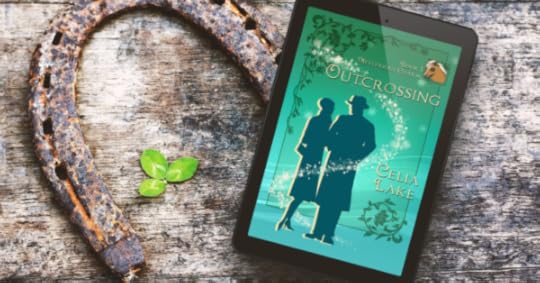 Demographics
DemographicsRoughly speaking, there are about 3000 people of a given age in Albion during the period when I’m writing. About 560 of those attend one of the Five Schools, or about 18% (Schola is the smallest of the Five Schools with 70 students in each year. Snap is the largest, with about 150).
About 50% of Albion’s population has enough magic to make the Pact and use various minor household charms and magical tools. They can keep milk sweet, make better salves for injuries, use keep-cool boxes or magical stoves, and use cleaning charms that can make thing easier and faster.
About 35% has stronger magic, enough to do a range of things, but with some meaningful limitations. These are not people who are going to be using magic all day as their core work, but might for specific tasks. Some kinds of crafting, a lot of agricultural magics, and so on fall in here.
Strong magicThat leaves about 15%, and basically everyone in this category goes to one of the Five Schools (plus some others). These people have strong magic, though that can involve raw power, ability to learn complex methods of doing magic, or other aspects (and people have different approaches). Almost all of my protagonists fall in this category.
Ferry doesn’t have strong magic, though she does develop skill with delicate ones as an adult. Elen has a lot of strength of capacity but not powerful oomph to make things go, etc. Thesan does have a fair bit of magical competence, but she doesn’t use anything obviously powerful most of the time.
Magical strength isn’t the only consideration for schooling – some people with weak magic but powerful families end up at Schola. Some with strong magic but no patronage don’t get an offer to any of the Schools (like Rufus). Over the course of the 1920s, a number of reforms take place to help improve this, specifically because of the chain effects of deaths in the Great War affecting specialists in a number of fields.
EducationChildren in Albion (i.e. educated within the magical community) have a similar education to non-magical children of the period until they are 13. That includes local or village schools, learning at home with a governess or tutor, or other similar arrangements. Albion provides both correspondence options and travelling teachers for families in rural areas.
The Five SchoolsThe Five Schools in Albion specialise in different kinds and approaches to magic. Schola focuses most on magical theory and complex magical forms (or at least the foundations for learning more about them as an adult). Alethorpe focuses on crafting magics and practical ones, and Dunwich on those related to trade. Forvie deals with fishing, ocean magic, and coastal magics, including weather, and Snap is the home of those interested in agricultural magic.
Some children go to a tutoring house the autumn they’re 11, to begin to build connections with others of a similar background. The tutoring houses are most common for Schola, but some exist for the other schools. They allow for fostering, broadening skills and relationships beyond the immediate family, and allowing a wider range of adults to get a sense of the next generation.
Children who are going to one of the Five Schools begin there the September they are 13. All of the schools run for five years, until the June after someone turns 18. Most of these students then go on to apprentice.
Other optionsThose not going to the Five Schools continue with their village education until 16, when they generally apprentice. In a few cases they may go into a line of work where there isn’t the same sort of formal apprenticeships (serving in the Army or Navy, going to work in the non-magical community and working their way up through positions, etc.)
ApprenticeshipsGuilds have been a central part of Albion’s community and professional structure since well before the Pact. As was true in the non-magical community of the mediaeval period, guilds form a central point for confirming skills in specific crafts, managing contracts and negotiations, and handling conflicts related to the guild’s work. Albion also has a number of other groups that act like guilds in most ways.
Most apprenticeships, therefore, are mediated by guilds. Some have formal benchmarks for moving from apprentice to journeyman or journeywoman. We’ve seen mentions of this with the Alchemist’s Guild, the Apothecary Guild, the Talisman Maker’s Guild (such as in Elemental Truth), the Astronomer’s Guild, the Printer’s or Bookbinder’s Guild (as in Bound for Perdition). Weaving Hope has a bit more about how that works for the Weavers.
In these cases, the guild sets standards for who is accepted as an apprentice, what skills are required, and how to maintain those standards for goods, services, and training.
Some people also just go into the family business, get
Experiences of apprenticingWithin that context, individual can take on apprentices. There is usually a fee for this (though sometimes families will swap apprentices). Cassie, in On The Bias, has three apprentices under this arrangement, and Eda in Weaving Hope is responsible for four current apprentices, with assistance from her journeywomen and second. In both these cases, their families pay a fee, and the apprentice earns a progressive wage as they get more skill and can do more complex work.
In both these cases, the apprentices live out. That could be rooms near where they work or it could mean living with family if the family’s near enough a portal. Two of Eda’s apprentices are living with journeywomen in their homes, and helping with the work there.
Sometimes apprentices in this situation live elsewhere. Sometimes, as in Rufus in the extra The Size of the Bog, they get room and board. That’s usually more true when someone can offer immediate assistance outside of the skills they’re leaning as an apprentice. In Rufus’s case, he’s entirely able to offer the physical labour of taking care of livestock when he begins apprenticing.
Complex magicSome specialities have more personal arrangements. Teaching someone Ritual magic, for example, involves a lot of close personal interaction, changes to how the apprentice master or mistress is doing their own work, and more.
Apprenticeships in magical specialities (Ritual, Materia, Alchemy, talisman making) tend to be more carefully negotiated as a result, because of the level of commitment required by all parties. And of course, specialists of a high level of skill don’t grow on trees: not all of them take apprentices, or have an apprentice routinely. Notable families usually begin the negotiations as soon as possible once it’s clear what speciality is desired.
These negotiations are a bit more like marriage agreements. They often include a fee, but also exchanges of other kind. You can think of them as building connections that the apprentice mistress or master expects will have benefits for decades down the road.
Of course, sometimes there are problems with this. Farran, in Seven Sisters (and in the upcoming Harmonic Progression), initially began with a talisman maker only to find that his magic was not a good fit with that. His apprentice master handled it badly, but the eventual outcome involved breaking the apprenticeship and Farran apprenticing elsewhere.
Civic needFinally, some specialities are of such interest to the community as a whole that they make a point of casting a wide net – and making it possible for people without family connections or the money for fees to join them.
The Portal Keepers (see The Fossil Door as well as A Gentle Touch in the extra Three Tales of Gabe and Rathna) make a point of looking for people who might be able to learn their particularly nuanced skill. An established master or mistress of the guild interviews students with potential in their second or third year, and if they find someone with potential, hopefully negotiates for that person to give it a try.
In this case, the training is non-binding, they don’t want to keep people who don’t want to do that work. However, the early training is relevant to a number of other disciplines, so people who decide not to continue as a Portal Keeper generally have other good options.
Similarly, the Guard is open to a wide range of applicants, and while fees may be relevant, there are options for people who can’t pay them. In this case, as with the Healers we’ll talk about next blog post, apprentices do not immediately focus on work with a single apprentice master or mistress. Instead, there’s a period of learning general skills as a larger year group before picking a specialty.
Back next post with more details about the Healers!
The post Apprenticing in Albion appeared first on Celia Lake.
December 24, 2024
Plans for 2025
Hello to my plans for 2025! (You can check out what came out in 2024) As you know if you’ve been reading me for a little, you know that I plan a fair bit out in advance at this point. There’s room for things to move around, but these are fairly stable points.
(This is due to a combination of how I schedule writing and needing to plan out the background research.)
I’ve also got some updates to the website, direct sales via Payhip, and so on in the works over my winter vacation time. (Keep an eye out here and on the newsletter for an update when those are done.)
Coming outPastiche in audio book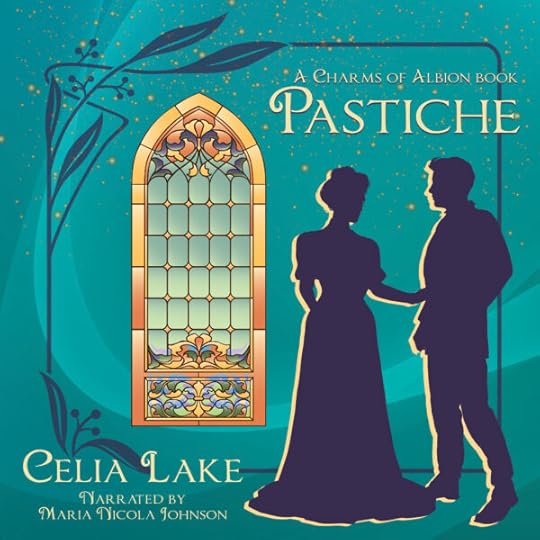
My first audio book! I’m currently working through listening to it to proofread, with those edits going back to Maria Nicola Johnson (the amazing narrator) at the beginning of January. It will take us a bit longer to get the files together in final form. Then they’ll go to the backers on Kickstarter first.
Once that’s done, I’ll work on making them available through other audio book sites (including direct from me, if you prefer that).
I hope for future audio books, but it will depend a bit on how well Pastiche does. I’ll have lots more about how you can help once the book’s available for purchase.
Weaving Hope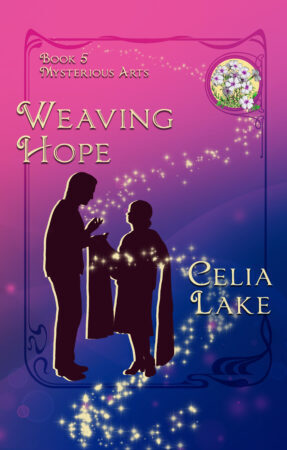
Out on February 7th (pre-order Weaving Hope now!)
Want a gentler and quieter book than the Mysterious Fields trilogy?
In Weaving Hope, it’s 1927 and Jeremy has recently inherited a manor house. He – a diligent clerk in the Ministry – has no idea what to do with a manor house. He can, at least, hire someone to evaluate the house’s tapestries. When Eda visits to evaluate and begin some restoration work, they both become fascinated with the tapestries, a family secret, and each other.
Grown Wise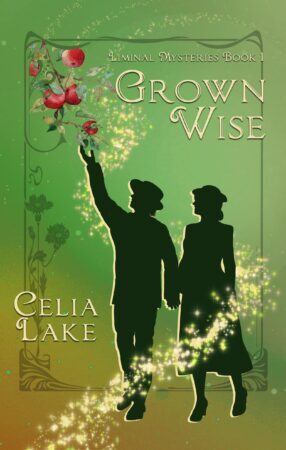
Out on May 2nd (pre-order Grown Wise now!)
Ursula Fortier’s romance in 1947 and the beginning of the Liminal Mysteries series of post-war romances. Ursula has so many plans. She’s made good progress on several: her apprenticeship in Incantation magic is going well, she has been named Heir to her Uncle Garin. But there’s so much more she wants and needs to do. The land magic of Albion desperately needs help, and she knows that there are people who can help.
Jim, recently returned from time overseas after the Second World War, is trying to figure out what his life looks now. He wants to apprentice, to learn more about everything he studied at Snap, but it’s hard to find a place. And now he’s home in Sussex, he doesn’t want to live elsewhere, on other land. When Ursula sweeps him up in her plans, he doesn’t know what to make of her, but he’s willing to listen.
(Or, as I have been describing this one: “Ursula is a terrifying delight.”)
Harmonic PleasureOut on August 8th
In 1928, Farran Michaels is nearly finished with his apprenticeship at Orumlu, one of Albion’s finest auction houses. When he takes on an assignment that brings him to London to work with the much larger houses there, he’s approached for help with a different problem.
Vega is a singer at The Crystal Cave, London’s best and brightest magical night club. But her family needs her help to find a magical object, lost in London for centuries, that appears to be active again. Farran has skills that she could use – and she finds him more interesting the longer they talk and work together. Especially once she figures out what he already knows about her family.
Claiming the TowerOut on September 19th
The first of a planned duology (with a follow-up novella) about Hereswith Rowan (seen as Head of the Council in the Mysterious Fields trilogy). This novel takes place in 1854, as Hereswith makes the decision to Challenge for the Council and burn parts of her life to the ground to make something better as her conversations with Bess at The Field (the Horse House club) blossom from friendship into that changes both their lives for the better.
(This is the one I’ve just started writing as I make this post in late December 2024.)
Edmund’s bookOut on November 7th
Edmund Carillon is eternally aware of what it means to be his father’s son. And his mother’s. Now in his second year up at Oxford, reading Classics and apprenticing with his Uncle Alexander in Ritual and Naming magic, he already has a busy and complicated life. When he and a female student in his year independently stumble across a puzzle, neither of them can let it alone.
Pen has no reason to trust Edmund – and several reasons not to. No one with his background will respect, never mind understand, what she learned during the war. Not that she can talk about it, anyway.
ExtrasI’m hoping to get several sets of extras out (as well as things on the Patreon, keep reading for that!) I also think it’s likely Edmund’s book will produce a number of extras, because he’s certainly producing a lot of research reading for me.
The Changing DoorA series of extras for Old As The Hills and Upon A Summer’s Day. These will be going out to people who chose the Edgarton omnibus on Kickstarter before the end of December. I’ll be sharing them with everyone on my newsletter, Patreon, and Discord around the end of January.
Extras for the Mysterious Fields trilogyThere are a number of extras written for the Mysterious Fields trilogy, with scenes that Thessaly and Vitus didn’t know about. (Yes, this includes more about a key death or two, and more about Alexander in the aftermath.)
I hope to get these edited and out sometime in the first quarter of the year (by the end of March), sooner if I can wrangle it.
Extras for Grown WiseGrown Wise also comes with a number of extras, because Ursula is a whirlwind and other people want to have conversations about that. These obviously need to wait for her book to come out, and probably a bit after that.
Over on the PatreonA public post over on my Patreon has more details, but patrons there (at any level, starting at $1 USD) are getting three different series of extras. (I aim for these to be around 2000 words each segment, but some are a little shorter and some are a good bit longer.)
Right now, those are:
Ritual Time, following Cyrus through the years he’s Head of the Council (finishing in February)A Fox Hunt, a prequel series leading into Grown Wise , focusing on Ursula and her family in 1945-1947. Friend? Friend. is a series about how Orion and Claudio become friends (overlapping with the events of Eclipse , mostly in 1925)As those finish up, I have other things in mind!
Gil finally speaks to his younger brother Michael again in 1943. Seeking a Wife: Geoffrey’s attempts (with Alysoun’s help) to find someone to marry and continue the family between Ancient Trust and Goblin Fruit . Isembard, 1923-1924: Isembard’s first year of teaching at Schola (the year before Eclipse ), full of some good choices and some less wise ones. Together with a Common Goal: Arthur and Melusina during the events of Carry On . Plus some one off extras or short sequences. WritingAnd along with that, there’s the writing! The writing stack in 2025 includes the following. (They mostly don’t have titles yet: that usually happens when I do the outline, 2-3 weeks before I start writing.)
Claiming the Tower : Hereswith and Bess’s book (which I’m writing through January)Edmund’s book : Starting writing in February, out in November 2025. Second in the Liminal Mysteries series of post-war romances. (More above)Gemma’s book : Starting writing in May, out in February 2026. The later in life (she’s about 40) romance of Gemma Smythe-Clive in 1928. Sixth in the Mysterious Arts series. Rowena’s book : Writing starting in August, out in May 2026. Another of the post-war romances, set probably in 1948 or 1949, in Scotland, and picking up on a bit of family history for one of her friends. Third in the Liminal Mysteries series of post-war romances. Hereswith and Galahad’s romance: Hereswith’s romance sometime around 1860 with her eventual husband, much to her surprise. Probably out in June or July 2026, written somewhere before that. Claudio’s book: Writing starting in November, out in August 2026. Last in the Liminal Mysteries series of post-war romances, and also the latest chronological point I intend to write (it takes place in 1950). That Pact projectFinally, I’m continuing to do research toward a series set around the time of the Pact in the 1480s. I am, as of right now, just past the Norman Conquest (up to about 1100), so, um, I have a few centuries to go yet. A lot of what I’m reading is taking my thoughts about the development of management of the land magic of Albion to what it is before the Pact, and why specific aspects of the Pact ended up that way, which makes this a tricky project in terms of scope.
You can keep track of my research with roughly quarterly posts on the Patreon, but right now I’m expecting I might actually be able to start working on writing this series in very late 2026 or early 2027.
The post Plans for 2025 appeared first on Celia Lake.
December 18, 2024
2024 in review
It’s the end of the calendar year, and that means it’s time for a roundup of the year. Read on for what was published, what I’ve written, the extras shared this year, and what’s on the Patreon!
Books publishedIt was a tremendously busy year on this front, mostly due to the Mysterious Fields trilogy. This year, I published six novels:
Perfect Accord (1923) follows Charlotte Edgarton (Gabe’s younger sister and daughter of Richard and Alysoun) as she gets entangled in a group of people up to no good. Along the way she meets a talented alchemist (Lewis), defangs a plot, and falls in love.

The Magic of Four (1946-1947) is the last book in the Land Mysteries series. Unlike most of my books, it’s not a romance – they’re all 14 or 15 during this book. A school story, it’s full of the challenges of school life, navigating the year the secret societies pick new members, and an adventure that really could only happen at Schola. It features four children of couples in previous books: Leo Fortier (son of Thesan and Isembard), Avigail Edgarton (daughter of Gabe and Rathna Edgarton), Ros Carillon (daughter of Geoffrey and Lizzie Carillon), and Jasper Pride (son of Rufus and Ferry Pride).

Facets of the Bench (1927) is about Griffin refusing to let other people’s assumptions define his life, about jet carving, and about making a new life when the old one is no longer feasible. (That’d be Annice, the last two points.) It’s also all about Trellech’s Courts and land magic.
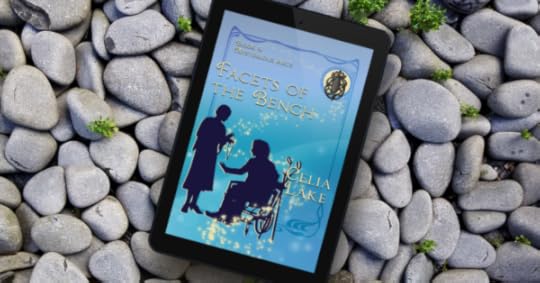
Finally, the Mysterious Fields trilogy. Enchanted Net, Silent Circuit and Elemental Truth follow Thessaly from her betrothal to Childeric Fortier – the match of their generation – to her growing friendship with Vitus Deschamps, a talisman maker on the cusp of finishing his apprenticeship.
Thessaly and Vitus get their happily ever after in book 3, but there are some challenging moments along the way.
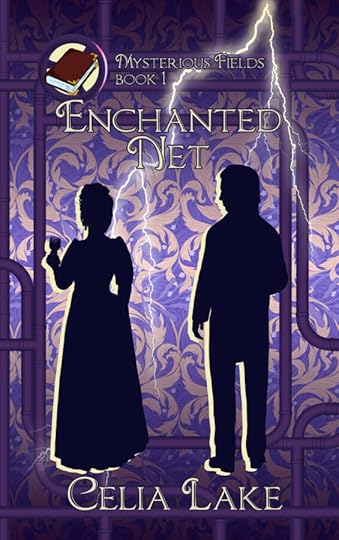
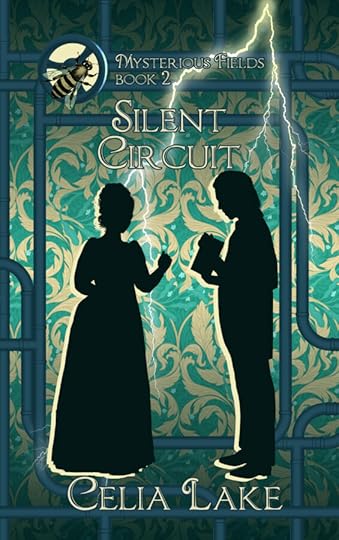
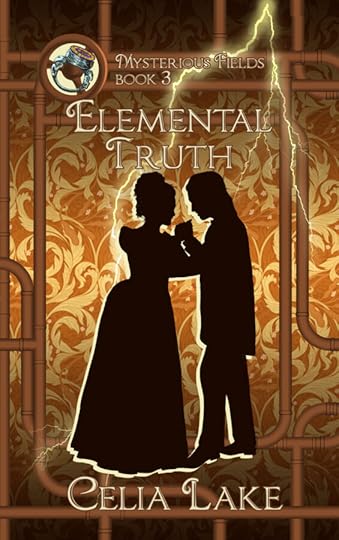 Books written
Books writtenSo, what did I write in 2024? The books include the following. (I’ll have more about them in the “plans for 2025” post that’s coming next week here on the blog.)
Enchanted Net (part of it), Silent Circuit and Elemental Truth, described above.
Weaving Hope, about a tapestry weaver and restorer and someone who has just inherited a very large house with tapestries, set in 1927. (Out in February 2025.) If you like my quieter books, this is definitely one of them.
Grown Wise, a romance featuring Ursula Fortier (Leo’s older sister) being an absolutely terrifying delight. It ties up a few threads of the events of the Mysterious Fields trilogy that weren’t visible to Thessaly and Vitus, takes on the land magic, and has a lot about apples.
Harmonic Pleasure (ok, technically almost done: I’m 2 chapters from finishing as I type this.) A romance featuring Farran Michaels (last seen in Seven Sisters) in 1928 near the end of his apprenticeship. This one includes a night club singer, and ‘how many interesting bits of London lore can I fit into a single book’?
ExtrasBesides what’s on the Patreon (more about that below), I also shared these extras. (The extras pages explain the different ways you can get a copy if you don’t have them.)
Necessary Conversations, an extra of two conversations at the end of Perfect Accord.
and 12 Seconds in 1927, an extra for the solar eclipse of 1927 (two years after Eclipse). I was lucky enough to be able to see the total eclipse in April 2024 with friends just across the border into Quebec. It was an incredible and inspirational experience.
And there’s the solstice extra, coming to my newsletter, Patreon, and Discord on December 20th. Keeping this one secret has been hard!
Over on PatreonFinally, over on Patreon, I’ve been sharing different series of extras. (We have one more Schola Tales episode to go, but I’m saving it until after a particular point in A Fox Hunt, because they overlap in events.) These are all available at every level, from $1 on up.
(It’s also totally fine with me if you subscribe for a month and then drop it again. All of these will eventually be edited and made available to everyone on my newsletter and Discord for free, but it may be a minute or three.)
Schola Tales follows the four students from The Magic of Four through their first year at Schola (where the novel is their second). It also gave me a chance to explore some scenes in more detail that don’t do a lot for the narrative.
Ritual Time follows Cyrus from when he becomes Head of the Council in 1932 through to his retirement in 1946 (one scene a year, with a few exceptions). We’ll have three more in this series in 2025.
A Fox Hunt is about Ursula Fortier (and her father and uncle, as well) as she leaves school and settles at Arundel with a goal of being her Uncle Garin’s Heir. The first scenes are 1944 and 1945, and mostly in 1946 into 1947. (This is timed so we’ll get the last episode in May when Grown Wise comes out.)
Friend? Friend. is all about how Orion Sisley and Claudio Warren moved from ‘thrown in together with each other’ to deep friendship and chosen brotherhood. It overlaps with the events of Eclipse in the 1924-1925 school year.
Back next week with plans for 2025! (And plans for the Patreon will be up on the Patreon, as well.)
The post 2024 in review appeared first on Celia Lake.
September 11, 2024
Mysterious Fields is coming!
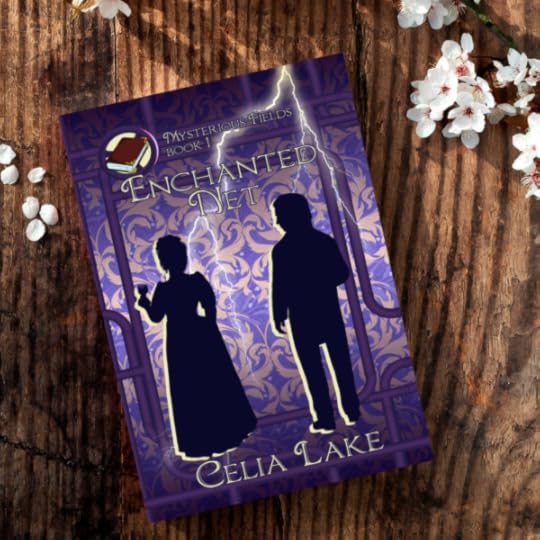 Enchanted Net (out September 20th)
Enchanted Net (out September 20th)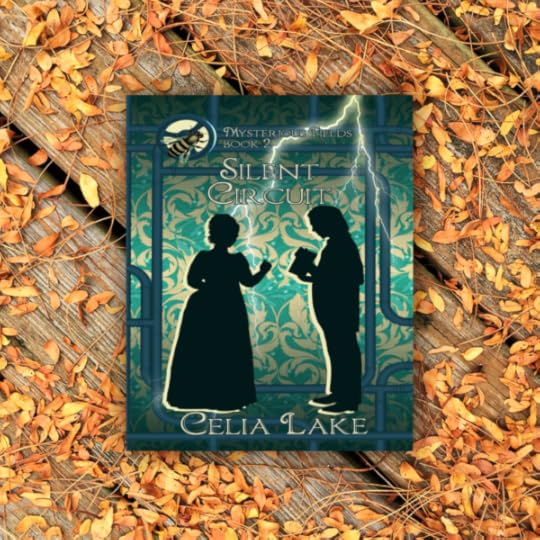 Silent Circuit (out November 15th)
Silent Circuit (out November 15th)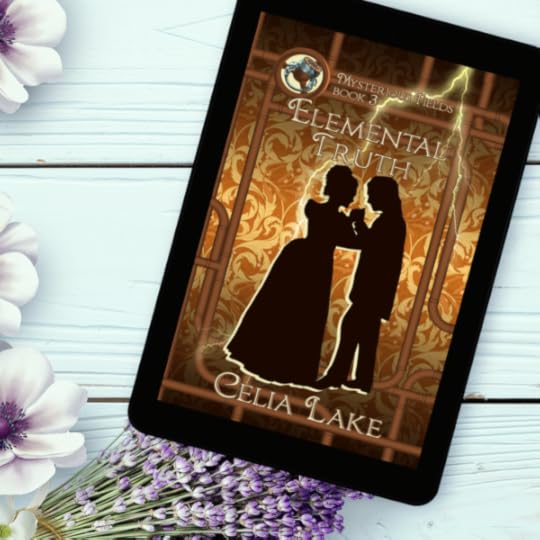
Elemental Truth (out December 13th)
It’s my first trilogy! One romance – and substantial plot – playing out over three books. I’m so excited to share Thessaly and Vitus’s stories with you – along with everyone else in these novels.
This trilogy is about finding the difference between what you’re told to want and what you actually desire. It’s full of siblings making different choices about how to love and support their brother or sister (or in one case, not.) It’s about the patterns that families make and uphold – some much better for everyone than others. And it’s about falling in love, finding a way through the difficult times together, and coming out into the sun with hope for the future. And it’s about how the spirit of invention and experimentation brings both great delights – and new threats.
Oh, and it’s also full of Council politics, six deaths, and a wedding.
This trilogy dives into the Victorian era of Albion, giving us a chance to see characters who appear in later books (Cyrus Smythe-Clive, Niobe Hall, Alexander Landry, and several others), much earlier in their lives. Our happily ever after comes in book 3. There are many mysteries along the way, and Thessaly and Vitus solve many of them, but not every last detail is known to them.

Enchanted Net, book 1, will be out on September 20th, 2024.
In March 1889 (the opening of Enchanted Net), Thessaly is betrothed to Childeric Fortier, golden son of his generation. It’s everything she was born and raised for, joining her magic with an ancient line for everyone’s benefit.
It’s not like that. And when Thessaly meets someone she’d love to talk with more – about her illusion magic, his talisman crafting, and their shared sense of art and beauty – it becomes even more complicated.
When Thessaly’s work is shaken to its core, she doesn’t know where to turn or who to rely on for support. And that’s where things start to become truly complex.

In Silent Circuit (out on November 15th, 2024), Thessaly is trapped in a situation she does not want, and she’s not sure how to change her situation. Vitus, for his part, wants desperately to help, but he doesn’t have the sort of power or resources that might shift things. (He also needs to establish himself as a talisman maker, without alienating all of his potential long-term clients.)
When Thessaly’s situation changes again, in a way absolutely no one expected, it gives them new hope and options, but no real answers.

The final book, Elemental Truth, will be out on December 13th, 2024. Thessaly and Vitus are trying to solve a central mystery, the question that might make everything make sense. At the same time, the pressures from Thessaly’s parents and the rest of the world are piling up, more and more challenging to deal with.
And coming next May, Grown Wise, Ursula Fortier’s romance, will pick up a few threads of this story nearly 60 years later, in 1947. (Specifically, the parts that Thessaly and Vitus had no way to know or find out.)
The post Mysterious Fields is coming! appeared first on Celia Lake.
September 4, 2024
Victorian Albion
I’ve written a few things set in the Victorian era (Forged in Combat takes place mostly in 1882 and Four Walls and a Heart in 1884). But with the Mysterious Fields trilogy, I got to spend quite a lot more time in the period. These three books are set between March of 1889 and June of 1890 (with the last chapter in October of that year).
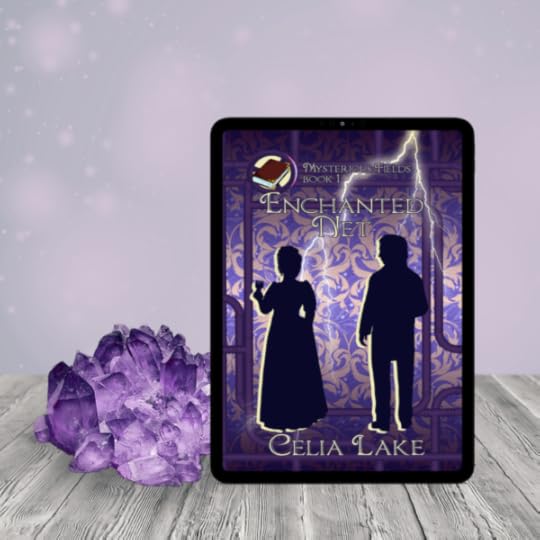
Of course, Albion raises an interesting question. In an era named for – and so strongly defined in many cultural ways – by a ruling queen, what does it mean for the magical community? The Pact – the act of magic that separated magical Britain from the non-magical in 1484 – also changed the relationship of the magical community to the ruling monarch.
Victorian Albion doesn’t mind having a queen doing the things queens do. But ‘the queen and the land are one’ is no longer magically true the way it was before the Pact. That responsibility and explicit connection has moved from the monarch (and a single point of failure) to the Council and Lords and Ladies of the land.
On the other hand, there’s still plenty of influence from the larger social culture. While Albion has some of its own customs around things like clothing and manners, others have kept in step with Victorian society. Most people in Albion, of course, spend some of their time most days interacting with people outside of Albion and the magical community. (Those who live in purely magical communities like Trellech or Schola island, or on the landed estates are the demographic exceptions.)
More thoughts to comeIn future blog posts, I’m looking at exploring a few of the specifics. They include Victorian funeral customs (and the customs of the same period in France, where the Fortiers take a number of their cultural cues). And they definitely include some of the tensions between the professional and upper classes. (You can expect all of those in the trilogy, too…)
Here, though, let’s look at three things I wanted to explore in the trilogy. Some are historically anchored, some are in dialogue with history, and some are just fun.
Roles for womenThe role of women in society is deeply class-related in the Victorian period. All those detailed customs for mourning (especially about when and how you could be in the outer world, and what you wore when you were) largely were the realm of Victorian women who did not work. Working class women and those women in or closely associated with professional work (such as helping run a store or business with a husband or other family) certainly mourned their loved ones and would wear mourning. But they also wouldn’t and couldn’t put their lives on hold for six or twelve or thirty-six months in terms of being active in their social worlds. (Formal mourning for the upper classes prescribed various forms of clothing for women, often in very specific detail. But it also limited the places they could be outside the home.)
Did I mention there are six deaths during this trilogy? Our heroine spends about half the trilogy in various degrees of visible mourning?
Gender and AlbionHowever, Albion has been a fair bit more balanced in terms of gender for quite some time. It depends on the individual and her background, but Albion learned that if you don’t train your magically powerful women, it usually ends up badly. Not only for them, but for other people around them or accidentally nearby. As a result, Albion’s magical schools are gender balanced. And women with stronger or more potent amounts of magic get training, just like their brothers and fathers and husbands.
It also means that while there is a certain amount of ‘it’s a tad unseemly for upper class women to work’, many women do have magical specialities. Sometimes they’re applying those to philanthropic goals, or to particular tasks for their extended families. Sometimes they’re acknowledged experts in a particular area, holding places on Albion’s Council, training others in their skills, or whatever else seems relevant. Albion’s Council at the start of the trilogy has 10 women and 11 men, for example.
(There are some considerations for women who are pregnant or looking to become pregnant. Some kinds of magic are less safe during that period. Similarly, travel through Albion’s magical portals is considered a non-trivial risk. Both of those come up in the trilogy.)
One of the threads in these three books are our heroine, Thessaly, figuring out what her adult life looks like – and what she wants it to look like. At the beginning of the trilogy, she thinks she’s making one set of choices, with some understanding of what that’s going to limit. By the end of the trilogy, she’s made some different choices (but ones she’s much happier with).
ExperimentationOne of the things that fascinates me particularly about the later 1800s is the sheer range of experimentation. I dove into nailing down dates for a whole range of scientific experiments as part of this trilogy. (As well as ‘wait, what did we actually know about this bit of geology right now?’). There are still a lot of things we don’t actually understand all that well about electricity. The 1880s and 1890s were a period of trying a huge range of ideas. Not all of them were good ones.
And later in the 1890s, we have the isolation of phosphorus, the discovery of radium, and more. (I, alas, could not do a plot-related thing with the trick in “The Hound of the Baskervilles”. I’m writing a few years too early for it, here.) And there were all sorts of quack cures, decidedly questionable choices, and people doing dangerous things in the pursuit of knowledge. Some of these worked out much better than others.
People being peopleOne of the things that always fascinates me about history is the continuing ways that people are people. Wherever you look in history, there are so many human tendencies that come through again and again. Some people are curious, some people just want to get on with what they know. Some reach for power and status, not caring who they hurt on the way. Others take a look around to see how they can help. Some get caught up in their own hubris or pain or fear, and make terrible choices.
The same is true in the Victorian period. Some people are more progressive. Others are looking to make use of whatever technology whatever way they can to get ahead. Some work within the constraints of the society around them, and some look for other options.
Coming in due courseAs to more Victoriana… I’m planning on a duology involving Hereswith Rowan, who appears as a secondary character in the trilogy. The first one will take place around the time of her Council Challenge, sometime during the Crimean War. The second is a few years later, once she’s established on the Council. That’s an entirely different set of clothing delights to have fun with!
The post Victorian Albion appeared first on Celia Lake.
August 14, 2024
In Character: Elizabeth Mason
I adore Mason (everyone calls Elizabeth Mason that.) Her background and the role she has in my books has grown over the years.
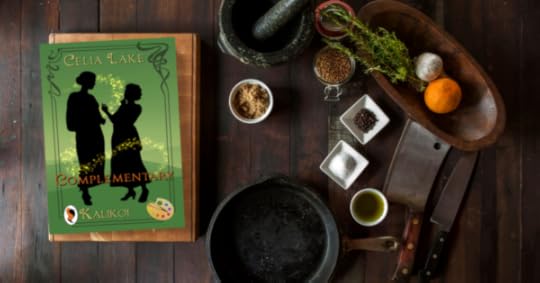 Background
BackgroundElizabeth Mason was born in June 1866 in Trellech, Albion’s magical city. Her family are colourmen, people who create pigments for paints and inks. Her grandfather was Dutch and married a Malaysian woman, their daughter then married an Englishman and settled in Albion. There is, of course, a long history of trade both from Dutch and British sources in Malaysia, especially around import materials.
There’s a brief comment about the family in Elemental Truth (out in December!). At that point it’s 1889. Vitus mentions that the business is two brothers, two sisters, one of their husbands, and two daughters in the next generation (one of whom is our Mason, in her apprenticeship as a Penelope).
We also see one of Mason’s Dutch cousins, Grietje, in Old As The Hills. Grietje’s two generations younger (she’s 33 in that book to Mason’s 74). That book doesn’t get into what happens to Grietje, but she stays in Albion until she can reasonable return to the Netherlands.
EducationMason attended Alethorpe, one of Albion’s Five Schools. Alethorpe focuses a great deal on crafting. She went in expecting she might follow in the family business – and she certainly has a number of skills with pigments and inks. But there she met Agatha Witt.
Unlike Schola’s house system, Alethorpe assigns students in their second year. The first year, students are assigned more or less randomly. As they settle on a speciality, they’re assigned to houses with others of compatible interests. That doesn’t mean the same skills – it means people who might learn from each other or who have specialities that rely on each other. (For example, we see Lynet and Ellis in Bound for Perdition, book binder and paper maker. Or Cassie and Greer, as a dressmaker and cloth dyer in In The Cards.)
Witt and MasonWitt and Mason do actually have a lot of overlapping skills, but they come at them from different directions, especially during their time at Alethorpe. Mason began with all the artistic ones – making inks and paints but also how to use them, sketching and painting. Witt began with an interest in materia and incantation.
Mason and Witt have been close for a terribly long time – since they were 13 or 14. They’ve been working partners since they began with the Penelopes, and they complement each other wonderfully. Mason is a force of chaos, and Witt is made of order. Where other people might be frustrated by that (and they are sometimes too), they mostly manage to make the most of it and get the best of both perspectives.
However, they absolutely cannot stand to be in each other’s working spaces. (Social events, they’re fine. . Or at least they cope with the other’s preferences much better.) When they’re working, they have to go find a free workroom or more neutral space to talk for any length of time.
(Only some of this is that Mason definitely has what we’d call ADHD today: there are ways it serves her well, and there are ways it’s not helpful to her. Great for ‘picking up this conversation from three weeks ago without missing a beat’, not so great for turning in paperwork at reasonable intervals.)
PenelopeWitt started her apprenticeship a week before Mason (technically). Witt’s also older by about 9 months (her birthday is mid-September 1865). In Three Times Told, Mason reflects on the slight difference of seniority. If you pay close attention to how Gabe addresses them together, he will swap which name comes first each mention. Because when it comes down to it, the seniority is sort of an illusion. It amuses both of them.
Once they began their apprenticeships, both Mason and Witt got taught the wide range of investigative skills the Penelopes use. These involve a range of magical approaches. Mason picked up additional background in Materia and Incantation, and she’s also got a solid dose of practical ritual work.
Like all Penelopes, she takes on a wide variety of cases. There’s one notable one, where there’s a gap if you know about Richard, in Wards of the Roses. Mason’s not mentioned as working on that (nor are the other Penelopes, until late in the book).
In The Fossil Door, Gabe explains why. Mason was one of the first people to investigate it. When she tried a ladder over the wall of the manor house, some great force threw her back. She broke her arm and had other issues with her magic for weeks after. (This is also part of why Gabe’s not working on that problem: Richard is in fact terrified something worse might happen to him.)
Here’s what Gabe says about the aftermath:
The EdgartonsShe’d been plagued both with a sense of persistent vertigo and – worse, she said – an odd song that played on and on, like no other music she’d ever heard, she said. That had only eased six weeks later at the end of July. He had been sent along as the sacrificial offering to her boredom, to keep her entertained, in any remnant of his free time. It had been by the universal agreement of every other Penelope and both his parents.
By 1906, Mason is well established as a Penelope. She’s 40, well into her prime, not particular senior, but entirely competent. She and Witt have become Richard Edgarton’s preferred Penelopes to deal with. They’re fairly close in age. (Richard is 34 at this point).
But perhaps more relevant is that Richard particularly appreciates the gifts their synergy brings. While Richard is a man of deeply rooted tradition, he appreciates people who get things done and who are committed to excellence. (Also, both of them appreciate Alysoun and love getting time with her, which doesn’t hurt anything here.)
In the wake of the other events and choices of Pastiche, they both become closer to the Edgartons, socially as well as professionally. Within a year so, they’re chosen aunts to both Gabe (6 or so at that point) and Charlotte (4ish).
There are some brief mentions in multiple books about how Alysoun, Mason, and Witt collaborate on helping get women out of difficult marriages. (Via evidence for divorce or oaths that mitigate the worst of whatever is going on.) Alysoun is more likely to be able to approach women of the Great Families in those situations and be listened to, while Mason and Witt can figure out what evidence would help or what options might function best.
Gabe and CharlotteAs Gabe and Charlotte Edgarton get older, they establish their own relationships with Mason and Witt. Mason makes a point of teaching both of them a fair bit of cooking, both practical British and some of the Malaysian dishes. Growing up in a large estate, neither of them does their own cooking regularly, but Mason believes this is a key skill. Charlotte demonstrates her skills with a number of dishes in Perfect Accord.
And Gabe, well. Gabe isn’t quite sure when to date his apprenticeship as a Penelope, but sometime before he was nine. By the time he was eleven or so, Mason and Witt were actively setting a course for him, and by the time he’s a couple of years into Schola, they’ve figured out a range of projects that will set him up brilliantly. Gabe is in fact made to be a Penelope, the way his own natural gifts and inclinations are.But part of the reason he has the shortest formal apprenticeship in centuries is that he started early. (We’ll come back to Gabe’s book in the art section.)
Her romanceIn 1910, Rosemary Ditson turns up with something odd she’s discovered, and speaks to Richard Edgarton about it. That’s the opening chapter of Complementary. He immediately calls in Mason, because it involves a non-magical artists’ colony. Mason and Rosemary go off, pretending to be casual friends, but a romance develops when they’re thrown into close proximity.
Mason honestly never expected to settle down with someone. She absolutely hadn’t expected to find someone who could tolerate her odd schedule. But Rosemary’s a midwife, with plenty of odd scheduling of her own, and a reasonable tolerance for Mason’s tendency to pile any flat surface with art, materia, books, and anything else that will stay put.
(Witt remains unpartnered romantically for the rest of her life, though she has a number of close friendships, especially with Lucy Doyle, her favourite apprentice.)
Art skillsIf you need an artist for an assignment, Mason likely to be the one on call. We see this in Pastiche, then in Complementary. Mason pulls the techniques she figured out in Pastiche, using sympathetic magic principles to rule out certain provenances with artwork, into use in Facets of the Bench.
It becomes clear in Pastiche that she has a hobby of a little light art forgery. She and several friends get together to try out forging new challenges. On one level, this is a tremendous test of skill and ability to take on a number of different styles – and thus useful for investigations as a Penelope. And on another, it’s just plain fun, and plays into all Mason’s trickster delights. As Mason says:
“Can’t untangle some things without knowing how they’re made. I make forgery copies as presents for friends. Properly labelled. Journals belonging to mistresses of kings, or for that matter, queens. The sort of herbal that makes sense for about ten pages and then gets increasingly more bizarre.” She flicked her fingers. “Some friends and I have a habit of coming up with things and swapping them. It keeps our hands in.”
In Complementary, she brings a sample with her to the initial meeting, at Richard’s request. She’s been working on a copy of a Scottish herbal, using inks made from regional plants. She also brings a number of sketches and other works in progress with her.
But one of Mason’s greatest works is the book that she makes Gabe for the end of his apprenticeship. In The Fossil Door, Gabe shares it with Rathna (as a particular step into one kind of intimacy). Here’s just part of that description, from Rathna’s point of view.
The Second World WarAny one part of it might have been a solid journeywork for a painter or an artist who worked in books. The combination was a masterwork, even before considering the text and content. There were dozens of artistic styles, many of which she could barely name. Secretary hand, Gothic lettering, Greek letters, what she thought might be Phoenician, some Egyptian hieroglyphs, alchemical symbols, a set of squiggles that must mean something to someone.
The art was just as varied. It ran from something that evoked the earliest of the cave art with a raw ochre, to exquisitely detailed paintings that might have been a photograph. The bulk of it held to that mediaeval and Renaissance style, but even there, it was so varied that to believe it came from one hand beggared belief.
“Does your Aunt Mason ever actually sleep?” It wasn’t what she’d meant to ask, but it made Gabriel arch back and roar with laughter.
“Yes, she does, I have been told. That is – that is the result of thirty years of practice, teaching herself how to do all the hands and the styles. And it’s…” He cleared his throat. “That was my present, when I finished my apprenticeship. I had no idea. She’d been working on it since I was eight. All the things she’s learned about looking at a case, all the hints and tricks. It makes sense to me, it’s meant to be a memory palace, more than every detail written down.”
By the time we get to the Second World War, both Mason and Witt are in their 70s. Sensible people – even in Albion, where people are fairly vigorous into that decade – might retire. While Mason and Witt have turned over a lot of more active investigation, they are continuing to act as leaders among their peers (such as the meeting at the beginning of Old As The Hills, and coordinating and training and consulting on all manner of problems.
Everyone hopes that at the end of the war, they can move to the amiable consulting when it pleases them, with less of the necessity of crisis.
(And again, we’re back to the fact that one of the reasons I don’t want to write into the 1950s is I’d have to deal with people dying of old age: Magni, Gil, and then Mason and Witt are the especially hard ones.)
The post In Character: Elizabeth Mason appeared first on Celia Lake.
August 7, 2024
In Character: Orion Sisley
Welcome to our next character study piece, this time about Orion Sisley.
Orion is the stroppiest character I’ve ever written. He has good cause – especially in Illusion of a Boar when he’s coming out a completely horrific six months or so. For those not familiar with the term, it’s slang. The term became more common in the 80s, but is dated to use starting in 1943. It means rebellious, with an edge of ‘just plain difficult’, sometimes for baffling reasons. (Here’s the Etymology Online entry.)
This post contains plot spoilers for Illusion of a Boar, Orion’s romance. (Stop at “The War” of you want to avoid those.)
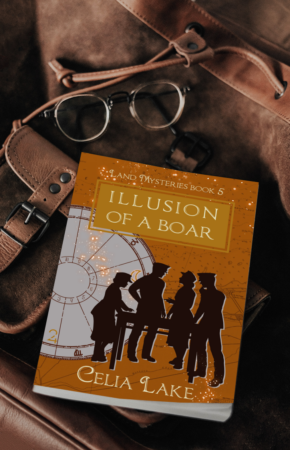 Orion and his brain
Orion and his brainA number of my characters are neurodiverse in some way, but Orion’s got an interesting story to his. When I wrote him in Eclipse, it was clear that he was frustrated by a number of things. And more importantly, that those frustrations were coming up in decidedly unhelpful ways. Over the course of the book, in the background, he starts working some of that out. Some of that’s on his own, a lot of it is listening more to Isembard and Claudio. And in due course, Thesan.
When I started writing Illusion of a Boar, I knew I wanted to do four rotating point of view characters. Orion’s first point of view chapter (chapter 3) makes it clear that while he’s coming across as short and irritated, there are some internal reasons for that.
Discoveries while writingIt was his next point of view chapter (7) that did it. I sent the chapter to Kiya when I finished writing it. Kiya came back with “He’s autistic, isn’t he?” And yes. Not only is he autistic, but he’s a particular expression of it that can sometimes be rough on other people around him. By the time we see him in 1944, he’s learned to manage a lot of that. (Well, at least when he’s not having the worst year of his life). But it’s definitely not perfect.
In his case, he understands that there are a lot of social subtleties that he’s missing. But also that Claudio can explain. (Sometimes other people, but Claudio is his preference.) He definitely has his particular special interests. It becomes clear he’s interested in history in general, but particularly so in military history, especially around the Wars of the Roses.
Orion certainly can be socially deft when he’s got a goal. Illusion of a Boar has a scene where Claudio wakes him up. Orion was out gambling with other officers in the camp. As Orion says, he won “Just the right amount, tactically speaking. Enough they’ll invite me back to see if they can win it back, not so much any one person will hold a grudge.” His actual goal, as the conversation makes clear, was to see if they’d drop any useful information while drinking and playing cards.
Still, all those skills are a lot of work for him. He’s much happier when he can retreat to better known ground and company.
The SisleysOrion comes from one of the longstanding landed families of Albion. When we first meet him in Eclipse, we know he has a younger brother, that his father is on the Council, and that his great-uncle Phineas is Lord.
The Sisleys – like some other families – actually have the custom of considering a sister-son as the next in line. In this case, Phineas did not have children who survived to adulthood. His sister’s son (Matthias, Orion’s father) took the family name and was formally adopted as Heir, then married twice. His first wife died when their son Hector was about 6. Matthias promptly remarried Eleanor, who raised Hector and then had two sons, Orion and Achilles.
Hector Sisley was killed during the Great War at the Battle of Vimy Ridge in 1917. Orion was about 9 and Achilles was only 2. (This means that Achilles has no conscious memory of his oldest brother.)
Matthias challenged for the Council in 1908 (the same year Orion was born) so Orion had never known anything else. Matthias was a specialist in Materia, with a particular interest in how different materials relate to each other. (And also a good touch of Sympathetic magic interest).
His school yearsWe first see Orion in Eclipse, when he’s in his fourth year (seventeen going on eighteen). At the beginning of the book, Isembard (who is his teacher, bodyguard, and mentor) is worried about him. He’s pushing back during his classes. Isembard and Thesan talk about him constantly walking up to a line of rudeness and abruptness and petty pranks that could turn dangerous. Orion never quite crosses it, but his teachers definitely are paying attention to it.
Two things happen over the course of the book that change that. One is Orion’s growing friendship with Claudio. When Eclipse starts, the two of them have been thrown together by circumstance since the previous year. While they’re a year apart in school, both of them are sons of Council members. And they’re both getting additional private training from Isembard.
The other key thread of the book is Isembard working through how to get Orion to look at things a bit differently. Some of that’s with Thesan’s help. Over the course of Eclipse, Thesan and Isembard are working out what their relationship might be (beyond ‘friends and fellow teachers’). It becomes clear that Orion has been paying attention and taking Thesan more seriously. She, in turn, understands about the world being too fast or too spiky or too poorly explained. Some of her suggestions are reassuring to Orion. (As is the way she takes him seriously when he engages with her in a different way.)
Here’s a snippet from an extra that’s not shared yet. It’s while Orion and Claudio sorting out being friends (rather than just thrown in together).
The impact of Magician’s Hoard
“And maybe sometimes other things?” Claudio offered. “What’s it like talking to Professor Wain?”
“Quiet. Not spiky.” Orion grimaced. “I don’t know how to explain, it sounds stupid. But she did set up to work through that test with me, I told you that. She’s really careful, laying things out. Professor Iz or Professor Landry, they’d skim through the set-up? But she made it clear she thinks the set-up is as important as the work. And taking notes at each step. Really fiddly? Only she got to talking about how that’s a lot of astronomy. Sometimes you only get one chance to do a measurement of something – a comet, an eclipse, something like that. So you want to make it so everything goes smoothly when you do. You can do it fast, when you know what you’re doing, but she’d never done what we were doing before, so we did it slow.”
The next school year – 1925-1926 – brings new challenges. Toward the end of the year, it becomes clear that Orion’s great-uncle has been caught up with some extremely nefarious dealings. The actual details don’t come out in that book (which ends before the various legal proceedings happen). However, Phineas Sisley resigns the title in favour of his nephew (Matthias). He is under more or less house arrest on one of the smaller family estates.
That changes Orion’s expectations, just as he’s leaving school and going into a planned apprenticeship. His father is now Lord, he becomes his father’s Heir, with all the greater social visibilty that brings.
AdulthoodOrion doesn’t ever entirely explain his apprenticeship. But it’s clear through Illusion of a Boar that he’s highly trained in various of the martial and protective magics (and a fair number of other related skills). He’s had a fair number of sexual partners. Though he talks in that book about how Isembard sat down and explained how to do that well and fairly to the women involved.
In 1936, he marries Decima Chambers. She’s a woman of good family (also of Fox House at Schola), about four years younger than Orion is. At first the marriage is agreeable enough to both of them. They have Melchior, their son and first child, in October of 1937.
But in 1939, the war starts, and Orion quickly sets off to use all those martial and protective skills. He comes home for a leave in 1940, which results in their second child, Sybil, born in March 1941. Later on, Orion wonders exactly how much Decima had planned that.
The warIt’s not entirely clear all of Orion’s postings during the war. He mentions ending up in the same hedge with Alexander Landry at one point in Illusion of a Boar, but not what the two of them were doing.
By 1943, he’s serving in the Dodecanese Islands off Greece, in a gruelling campaign. It’s there that his left hand is badly injured. This involving the loss of two and a half fingers (his pinky, ring finger, and half his middle finger). There’s scarring that goes up onto his wrist and arm, and all the emotional complication that goes with that. Especially for someone who is a magical duellist, used to running his magic through ten fingers and two hands. (He does eventually learn to rebalance this, but it’s not an instant process.)
He is invalided back to the UK and to the magical hospitals in Albion. By the time he arrives, there’s not much they can do other than some work to reduce some of the limitations of the scarring. The goal is to give him as much mobility in his hand as is possible. The non-magical army wouldn’t take him back at this point, so he’s sent off home for ongoing recovery.
Where he walks into his rooms to find his wife with a lover. It becomes very clear that first, she intended him to walk in, and second, she wanted to hurt him in the process.
Forward into a new projectOrion is – and remains – baffled by the whole thing. It’s not something he ever thought he had to worry about. It’s not the having a lover that’s a problem. (Like many families of that class in Albion, the marriage agreements are about lineage and familial commitments. Lovers outside of that are generally fine with appropriate precautions.) And certainly, the way Decima treats Orion (and then their children) is not remotely acceptable.
By the time Illusion of a Boar begins, he’s worked through all the necessary legal and magical untangling of the marriage. (He’s just waiting for the final decree as the book opens). And that doesn’t actually make anything better. He’s heart-hurt, confused, betrayed, and entirely tangled up when he arrives at Camp 020 for a new assignment.
The first good thing is that Claudio is there. Claudio has, in fact, arranged for Orion to be assigned to this. That’s both because it is somewhere Orion’s skills and experience are relevant, and because Orion needs to be doing something meaningful. (And Claudio misses having him nearby, too.) Interactions with the two women assigned to the project – Hypatia and Cammie – are rather more rocky.
Making things workOrion keeps asking questions, but in the sort of way that Hypatia reads as someone questioning her expertise. When Orion finally gets a chance to talk to Isembard and Thesan, we get one of my favourite scenes ever. In it, Thesan and Isembard walk Orion though the fact they’ve spotted several places he’s having trouble. And then she explains the way Hypatia is likely taking his questions – due to a combination of her own experiences related to gender, race, and magical specialty. She suggests something Orion can try instead, and he agrees to give it a go.
That works a great deal better. The more Orion pays attention to Hypatia and her reactions, the more intrigued he is. By the time he blurts out that she’s beautiful, he’s intrigued by her skills, knowledge, and how she handles herself. That turns out well for both of them, actually. What Hypatia’s needed has been someone who appreciates her and gives her space to be her nerdy and sometimes perfectionist self.
In the immediate aftermath of the war, they’re continuing to work closely together (along with Gabe).
After the warIn one of the extras in As The Ground Shifts, Gabe and Claudio begin to work out a theory of the tendencies of the Council seats. Of course, they want to test that theory. One excellent way is to get Orion to make a challenge when Garin Fortier retires. Orion agrees, though he’s not at all sure it’s a good idea. That turns out well for him (you can see it from Lizzie Carillon’s perspective at the end of The Three Graces).
I’ve got some extras in progress around their wedding, including a much requested scene of Hypatia’s mother meeting Alexander Landry. And we’ll definitely have more of Orion (and Hypatia and Cammie) in Claudio’s romance when we get there in 1950. It’ll be out in May 2026 if all goes well.
The post In Character: Orion Sisley appeared first on Celia Lake.



